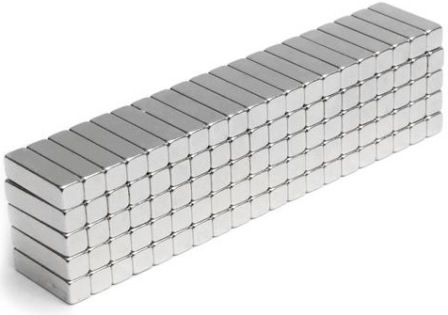Categories: Featured Articles » Interesting electrical news
Number of views: 21683
Comments on the article: 1
Neodymium magnets and their use
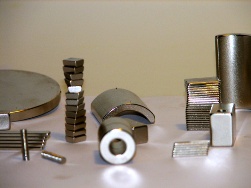 The strongest, most powerful permanent magnet available on the market today are neodymium magnets. They have the chemical formula Nd2Fe14B, and have an exceptional magnetic energy density of up to 512 kJ / m3. If earlier samarium-cobalt (SmCo) magnets were considered the most powerful ones available, then, starting in 1986, they were gradually replaced by neodymium magnets, much more economical in cost of production, albeit with a lower Curie temperature.
The strongest, most powerful permanent magnet available on the market today are neodymium magnets. They have the chemical formula Nd2Fe14B, and have an exceptional magnetic energy density of up to 512 kJ / m3. If earlier samarium-cobalt (SmCo) magnets were considered the most powerful ones available, then, starting in 1986, they were gradually replaced by neodymium magnets, much more economical in cost of production, albeit with a lower Curie temperature.
With the development of the electronics industry, from the 90s to the present, Neodymium magnets have gained great popularity everywhere, and many are still surprised by their remarkable properties, because such a magnet can lift a load thousands of times the weight of the magnet itself.
It all began with the fact that in 1982 the Japanese company Sumitomo Special Metals, working together with the American General Motors on the problem of finding an alternative to expensive samarium-cobalt (SmCo) magnets, found the neodymium-iron-boron compound, which was patented by General Motors in 1985 year. In 1986, Magnequench was opened, specializing in the production of neodymium magnets, and selling raw materials for their manufacture.
Magnequench later became part of Molycorp, USA, and Sumitomo became part of Hitachi Corporation, Japan, and now Hitachi holds more than 600 patents related to the production of neodymium magnets by sintering and licenses numerous manufactures around the world.
In the end, China became a leader in the production of neodymium magnets, because this country controls a huge share of the world's rare earth ores.
China annually produces 50,000 tons of neodymium magnets. Meanwhile, one ton of the original ore contains about 700 kg of iron, and neodymium - a maximum of 450 grams.
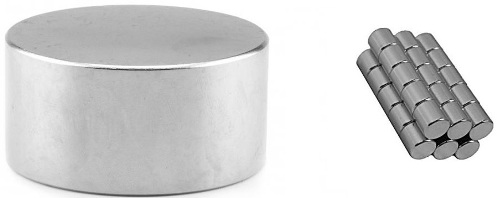
For the manufacture of neodymium magnets, powder technology is used to produce three types of magnets: extruded magnets, cast magnetoplastics, and sintered magnetoplastics.
Before the manufacture of magnets, the magnetic material is smelted, for this, the initial elements (iron, neodymium, boron) are fused in an induction furnace, then the resulting alloy is crushed, receiving powder for the further stages of the technological process, to work with the powder already.
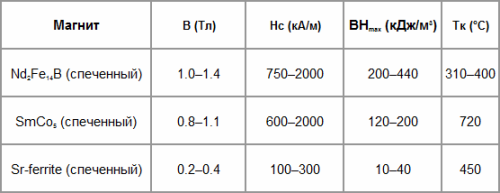
Depending on the microstructure of the starting elements, the magnetic properties of the final product may vary to some extent. Often, the Nd2Fe14B compound is directly used. It is its structure that gives the maximum magnetocrystalline, uniaxial anisotropy. But more complex chemical reactions are possible.
Sintered magnetoplastics are obtained by pressing neodymium-iron-boron powder, sintering it in an inert or vacuum environment, and then grinding it on a machine to obtain the desired shape. During powder pressing, it acts on a magnetic field desired intensity and direction, which sets the magnetization.
Cast Magnet Plastics are obtained using polymers that are mixed with neodymium-iron-boron powder, and then squeezed into a mold, and here it is possible to obtain any shape, however, the product energy is limited to 5 MGsec.
Extruded Magnet Plastics, in turn, are obtained as follows: the initial neodymium-iron-boron powder is mixed with the polymer, then pressed into a mold, heated and magnetized. No additional processing is required, and the energy of the pressed magnetoplastics is limited to 10 MGE.
So, neodymium magnets have the following distinctive properties:
-
Over 10 years, only 1% of the magnetization is lost;
-
Any sizes and shapes are available;
-
Low Curie temperature (see table above);
-
High resistance to corrosion;
-
Maximum residual magnetization;
-
Maximum coercive force;
-
Maximum specific magnetic energy.
Neodymium magnets are marked as follows, these are the so-called classes of neodymium magnets:
-
N35-N52
-
33M-48M
-
30H-45H
-
30SH-42SH
-
30UH-35UH
-
28EH-35EH
Here, the number denotes the magnetic energy expressed in MSE (MegaGauss-Oersted), and the letter (mark) - the permissible temperature range:
-
N (Normal) - up to 80 degrees Celsius;
-
M (Medium) - up to 100 degrees Celsius;
-
H (High) - up to 120 degrees Celsius;
-
SH (Super High) - up to 150 degrees Celsius;
-
UH (Ultra High) - up to 180 degrees Celsius;
-
EH (Extra High) - up to 200 degrees Celsius.
Usually, the seller is always ready to provide comprehensive information about the technical characteristics of the neodymium magnets he offers.
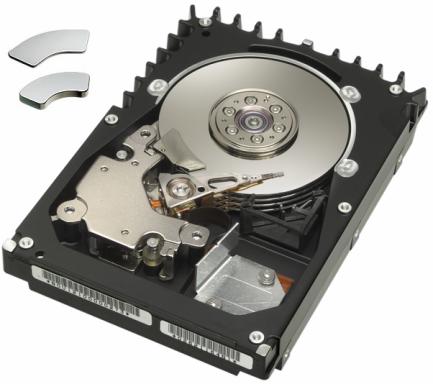
-
in drives of heads of hard drives of computers;
-
as a part of erasing heads of inexpensive equipment;
-
in magnetic resonance imaging (MRI);
-
in magnetic pickups of guitars;
-
in electronic cigarettes;
-
in door locks;
-
in loudspeakers and headphones;
-
in magnetic bearings;
-
in NMR spectrometers;
-
in electric motors;
-
in cordless tools;
-
in servomotors;
-
in lifting and compressor engines;
-
in stepper motors;
-
in electric power steering;
-
on hybrid and electric vehicles;
-
in generators and turbines (direct-drive turbines require 600 kg of magnets per megawatt of power, and 31% of this mass is neodymium);
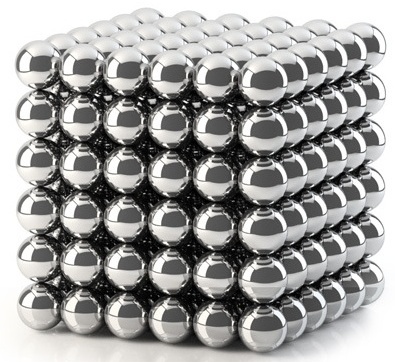
In addition, neodymium magnets with their unique magnetic properties inspired the creators of toys and jewelry. Everyone knows the neocub magnetic sets, and others, various designers, a variety of decorative fasteners and more.
Thus, neodymium magnets are capable not only of solving complex production problems, but also of simple, convenient solutions.
Recently, powerful magnets have begun to be actively advertised for use in illegal activities. Advertising encourages the purchase of magnets, with which you can use electricity, heat and gas without taking into account the consumed resources of the respective meters. The neglected use of such resources is illegal according to the Code of Administrative Offenses!
See also on our website:Magnetic levitation - what is it and how is it possible
See also at bgv.electricianexp.com
:

